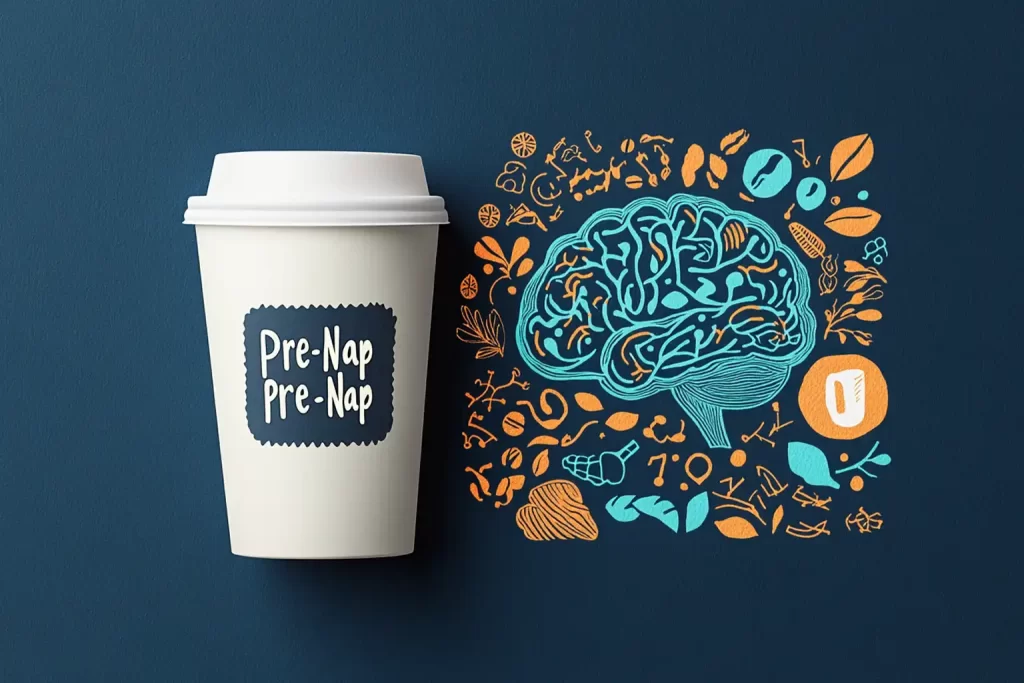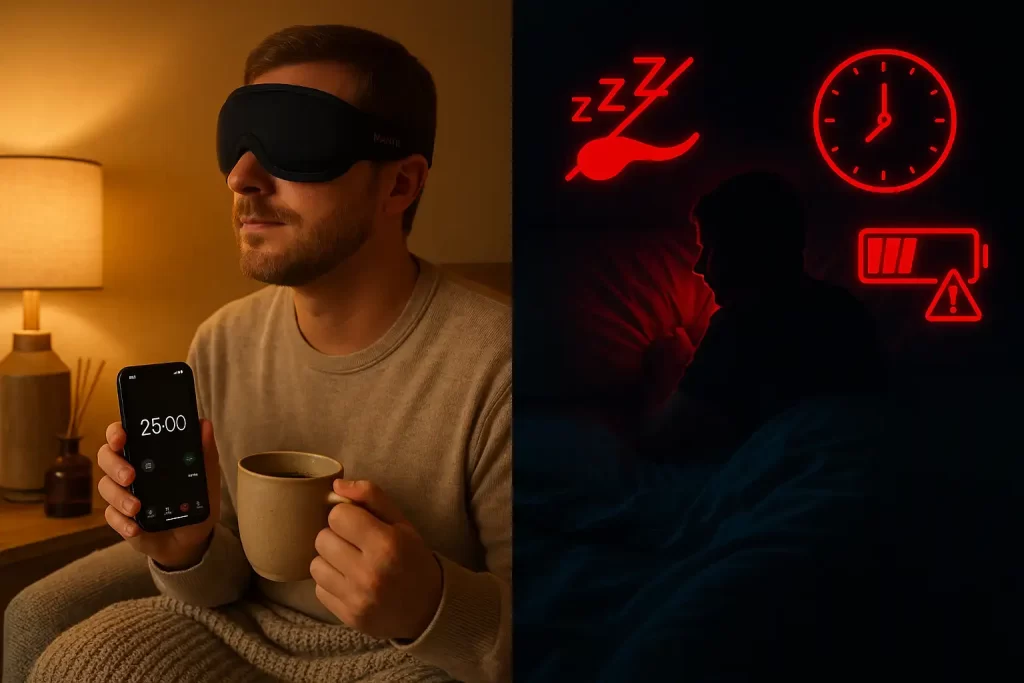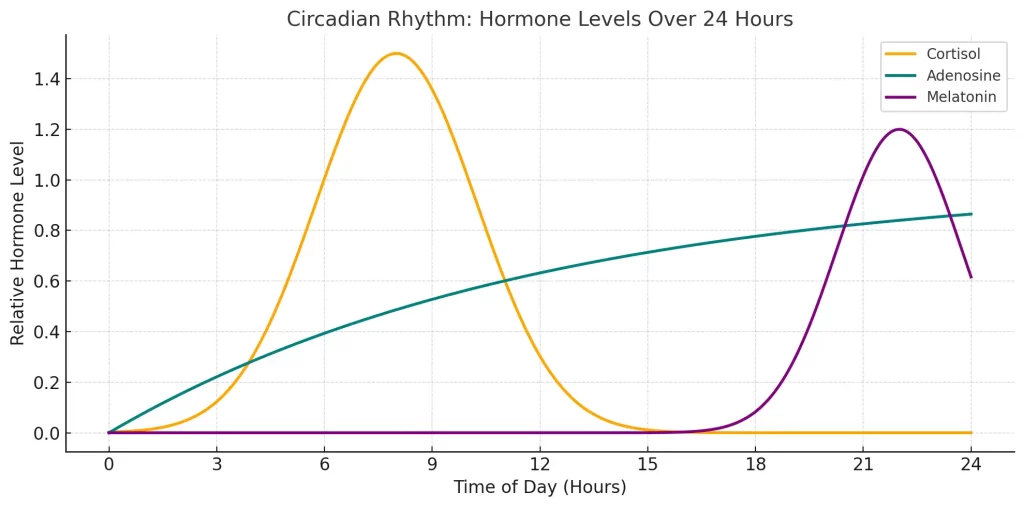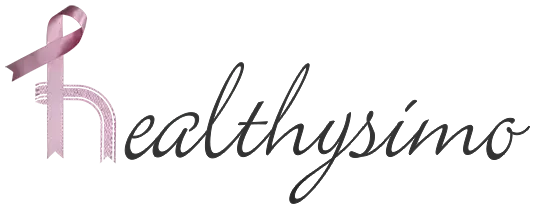It’s 3:07 p.m. The clock ticks sluggishly as your screen blurs into a haze of pixels. Your eyelids sag like weighted curtains, your brain swims in molasses, and the once-manageable task list now feels like scaling Everest. You’re not just tired—you’re biologically betrayed by the circadian rhythm’s universal afternoon dip, a primal lull coded into our DNA. Across offices, homes, and classrooms, 35% of adults confess to this daily battle with the “post-lunch crash,” according to a 2024 National Sleep Foundation survey.
The solutions seem simple: a triple-shot latte, a sugary snack, or doomscrolling through TikTok’s dopamine buffet. But these quick fixes? They’re Band-Aids on a bullet wound. Caffeine’s jittery highs crash harder than a browser with too many tabs, and screens hijack your remaining focus like digital pickpockets.
Enter the 20-minute nap—a neuroscientist-approved stealth tactic to outsmart evolution itself. Backed by NASA’s landmark study on astronauts (who napped 26 minutes to boost alertness by 54%), Google’s nap pod-equipped campuses, and Harvard sleep labs, this isn’t your lazy Sunday snooze. It’s a strategic reboot for your overclocked brain.
Imagine:
- Sharper Focus: A Johns Hopkins trial found 20-minute nappers solved complex problems 37% faster, their neurons firing like synchronized fireflies.
- Elevated Mood: Post-nap dopamine surges rival a morning coffee ritual, sans the crash.
- Heart Protection: Daytime micro-rest lowers blood pressure as effectively as a 10mg dose of lisinopril (Journal of the American Heart Association).
And here’s the kicker—it’s guilt-free. Unlike the sleep grenade of a 90-minute siesta, this bite-sized reset sidesteps grogginess and guards your precious REM cycles like a circadian bouncer.
Pro Tip: Pair your nap with the “4-7-8” breathing method (inhale 4s, hold 7s, exhale 8s) to plunge into restorative sleep within minutes.
Why 20 Minutes? The Goldilocks Zone for Napping
NNapping isn’t just closing your eyes—it’s a precision dance with your brain’s sleep architecture. The 20-minute nap isn’t arbitrary; it’s a biological hack designed to exploit the Goldilocks Zone of sleep stages—long enough to recharge, short enough to avoid sabotage. Here’s how it works:
Stage 1: The Gateway (1–5 Minutes)
Your brain slips into alpha waves, a twilight zone between wakefulness and sleep. Think of it as your system’s “idle mode”—muscles relax, heart rate slows, but you’re still semi-aware of ambient noise.
- Why it matters: Waking here feels like hitting snooze on a meditation app—gentle and grogginess-free.
- Pro hack: Use this phase for “nano-naps” (5 minutes) when time is tight. Studies show even brief rests reduce eye strain and mental fog.
Stage 2: The Sweet Spot (10–20 Minutes)
This is where the magic happens. Your brain fires sleep spindles—bursts of neural activity that act like a defragmenting hard drive. These spikes:
- Sharpen memory: Transfer short-term memories to the hippocampus’s long-term storage.
- Reset focus: Flush adenosine (a sleep-pressure chemical) from neural pathways.
A 2023 Sleep Medicine study found that 20 minutes in Stage 2 boosted pilots’ alertness by 54% during long-haul flights, while those who drifted into deeper sleep lagged in reaction times by 30%.
Stage 3: The Danger Zone (30+ Minutes)
Venture beyond 20 minutes, and you plunge into slow-wave sleep (SWS)—a physiological quicksand. Here, your brain pumps delta waves to repair tissues and strengthen immunity, but at a cost:
- Sleep inertia: Waking mid-SWS floods your system with melatonin, leaving you groggier than a bear in January.
- Circadian sabotage: Deep naps after 3 p.m. delay nighttime sleep onset by 40+ minutes, per Chronobiology International.
The Science of the 25-Minute Timer
Set your alarm for 25 minutes, not 20. Why? The average adult takes 5 minutes to fall asleep. This buffer ensures you max out Stage 2 without grazing SWS.
Pro Tip: Track your personal “sleep latency” with apps like Sleep Cycle. If you konk out instantly, shave timer to 22 minutes; if restless, add 3.
Real-World Proof: From Athletes to Astronauts
NASA: Astronauts on the ISS nap 26 minutes to combat microgravity-induced fatigue, boosting mission focus by 34%.
NBA players: LeBron James swears by 20-minute naps to recover between back-to-back games.
Benefits Beyond Energy: What a 20-Minute Nap Does for Your Body and Brain
- Cognitive Boost:
- Memory: A University of California study linked 20-minute naps to 20% better recall.
- Creativity: Light sleep fosters “associative thinking,” sparking problem-solving ideas.
- Emotional Resilience:
- Lowers cortisol (stress hormone) by 15%, per Psychoneuroendocrinology.
- Increases serotonin, improving mood and reducing irritability.
- Physical Health:
- Reduces inflammation linked to heart disease.
- Lowers blood pressure by 5–10 mmHg, rivaling some medications.

Avoiding Nighttime Disruption: Timing Your Nap Like a Pro
SuYour circadian rhythm isn’t just a clock—it’s a neurochemical symphony conducted by the suprachiasmatic nucleus (SCN), a tiny brain region that syncs your sleep-wake cycle with sunlight. Here’s how it plays out:
- 10 a.m.–1 p.m.: Cortisol (your alertness hormone) peaks, making you feel like a productivity superhero.
- 1–3 p.m.: Cortisol dips, adenosine (sleep-pressure chemical) rises, and your SCN cues a natural lull—evolution’s invitation to rest.
- Post-3 p.m.: Melatonin precursors start brewing. Napping now is like pouring espresso into your sleep hormone smoothie—delaying bedtime by 40+ minutes (Journal of Clinical Sleep Medicine).
Pro Tip: Track your “circadian trough” using wearable tech (e.g., Whoop, Oura Ring). Most hit it between 1:30–2:45 p.m.
The 1:2 Rule: A Nap Timing Calculator That Never Fails
To protect nighttime sleep, use this formula:
Nap Deadline = Bedtime ÷ 2
- Example: Bedtime at 11 p.m. → Nap before 2:30 p.m. (11 ÷ 2 = 5.5 → 11 – 5.5 = 5:30 a.m. + 12 hours = 5:30 p.m. → 17:30 – 15 = 2:30 p.m.).
- Science: This preserves 8+ hours of “sleep pressure” buildup for deep nighttime rest.
Shift Workers: Your rhythm is flipped. Nap 1–2 hours before your shift starts to preempt fatigue:
- Night shift (10 p.m.–6 a.m.): Nap 8–9 p.m.
- Rotating shifts: Use red-light glasses post-nap to block melatonin-disrupting blue light.

Prophylactic Naps: The SEAL Team Six of Sleep Strategies
When facing guaranteed sleep loss—a night shift, transatlantic flight, or newborn nights—a 90-minute “anchor nap” can be a lifeline.
- How it works: A full sleep cycle (Stage 1 → REM) clears adenosine and resets your SCN.
- Evidence: ER doctors using this method made 23% fewer errors during 24-hour shifts (Annals of Emergency Medicine).
- Pro Hack: Pair with caffeine (200mg) pre-nap for a “double rebound” of alertness.
The Forbidden Zone: Why 4 p.m. Naps Wreck Your Sleep
Napping after 3 p.m. triggers a vicious cycle:
- Melatonin Suppression: Evening light exposure post-nap tricks your SCN into thinking it’s midday.
- Delayed Sleep Phase: Your brain pushes bedtime later, fragmenting sleep architecture.
- Next-Day Payback: You’ll crave another nap, perpetuating the loop.
Exception: If you’re a night owl (genetically delayed chronotype), shift deadlines 1–2 hours later.
Circadian Cheat Codes: Adjusting for Time Zones and Age
- Jet Lag: For eastward travel, nap at 1 p.m. destination time to accelerate adaptation.
- Over 65: Age-related SCN weakening shifts the sweet spot to 12:30–2 p.m.
- Teens: Their delayed rhythm favors 3–4 p.m. naps—but cap at 20 minutes to avoid nightly battles.

The Takeaway
Timing isn’t just a suggestion—it’s neuroscience. By aligning naps with your body’s innate rhythms, you transform them from sleep band-aids into precision recovery tools.
Step-by-Step Guide to the Perfect 20-Minute Nap
1. Pre-Nap Rituals: Prime Your Brain for Rapid Reboot
The Caffeine Paradox: How to Hack Adenosine
- Science: Caffeine blocks adenosine receptors (the “sleep pressure” chemical), but takes 20–30 minutes to peak in your bloodstream. Drinking a cold brew right before napping lets you wake into a caffeine surge, merging chemical alertness with neural restoration.
- Study: A 2022 Psychopharmacology trial found the “caffeine nap” combo improved cognitive speed by 37% vs. naps or caffeine alone.
- Pro Tip: Opt for 100–200mg (1–2 shots espresso). Avoid sugary lattes—blood sugar crashes sabotage the high.
Darkness Engineering: Become a Melatonin Ninja
- Why: Even 5 lux of light (a dim lamp) can suppress melatonin by 50%, delaying sleep onset.
- Tools:
- Manta Sleep Mask: Blocks 100% of light, molds to your face.
- Blackout Curtains: Install ones with >99% light reduction (e.g., Nicetown Thermal).
2. Environment Setup: Build a Nap Sanctuary
White Noise Wizardry: Silence the Chaos
- Frequency Focus: Brown noise (low rumble) masks irregular sounds like traffic better than white noise. Apps like Noisli let you layer rain + fan sounds.
- Pro Hack: Pair with bone-conduction headphones (e.g., Shokz OpenRun) to feel vibrations without earbud pressure.
Thermal Tuning: The 65°F Sweet Spot
- Science: Your core temp drops 1–2°F during sleep onset. A 65–68°F room mimics this dip, signaling your SCN (brain clock) to release sleep-ready hormones.
- Tool: Smart thermostats (e.g., Nest) auto-adjust 30 mins pre-nap.
Scent Strategy: Lavender’s Neural Lullaby
- Why: Inhaling lavender increases theta waves (light sleep brainwaves) by 30%, per Frontiers in Neuroscience.
- How: Use a diffuser with 3–4 drops lavender oil 10 mins pre-nap.
3. Post-Nap Reentry: Launch into Hyperfocus Mode
The 10-Second Arctic Plunge (No Tub Needed)
- Step 1: Splash face with ice water for 10 seconds.
- Step 2: Rub an ice cube on wrists (pulse points).
- Why: Triggers the mammalian dive reflex, spiking norepinephrine 200% for instant alertness (Journal of Applied Physiology).
Sunlight Syncing: Hijack Your Circadian Rhythm
- Blue Light Blitz: Step outside for 5 mins of sunlight (or use a 10,000-lux SAD lamp if indoors). Blue wavelengths suppress residual melatonin, signaling “daytime mode.”
- Pro Tip: Pair with 5 mins of diaphragmatic breathing (4-7-8 method) to oxygenate your brain.
Micro-Movement: Activate Your Warp Drive
- Neurobic Routine:
- Cross-Crawls: Tap right hand to left knee (10x)—fires up brain hemispheres.
- Power Poses: Stand tall, hands on hips for 2 mins—boosts testosterone by 20% (Harvard study).
- Dynamic Stretching: Leg swings, arm circles—enhances blood flow to foggy brain regions.
The Grand Takeaway:
A perfect nap isn’t luck—it’s a calculated cocktail of neurochemistry, environmental control, and biohacking. Master these steps, and you’ll emerge from 20 minutes not just awake, but upgraded.
When to Skip the Nap: Red Flags and Health Risks
1. Insomnia: When Daytime Rest Steals Nighttime Recharge
Napping with insomnia is like pouring water into a leaky bucket—it undermines your body’s primal need for consolidated sleep. Here’s why:
- Sleep Pressure Sabotage: Daytime naps drain adenosine, the neurochemical “sleep debt” that builds during wakefulness. Less adenosine = weaker drive for deep nighttime sleep.
- The Vicious Cycle: A 2023 Sleep Journal study found insomniacs who napped took 52% longer to fall asleep, with 37% more nighttime awakenings.
Dr. Rebecca Robbins, Harvard Sleep Scientist:
“If you struggle to sleep at night, napping is borrowing from a debt you can’t repay. Prioritize sleep restriction therapy over naps.”
Alternatives: Try NSDR (Non-Sleep Deep Rest) protocols like yoga nidra—20 minutes of lying still with guided breathing.
2. Chronic Sleep Inertia: Your Body’s SOS Signal
Waking groggy daily after short naps isn’t normal—it’s a red flag for:
- Sleep Apnea: Fragmented breathing disrupts sleep stages, leaving you exhausted despite “rest.”
- Narcolepsy: Faulty orexin/hypocretin systems cause REM sleep intrusions during naps.
- Iron Deficiency: Low ferritin (<50 ng/mL) impairs dopamine synthesis, prolonging fog.
Action Step: Request a polysomnogram (sleep study) and ferritin blood test.
3. Nap Dependence: When ‘Quick Fixes’ Mask Bigger Problems
Needing daily naps to function is like relying on adrenaline shots to run a marathon. It indicates:
- Severe Sleep Debt: Chronic sub-6-hour nights exhaust cerebral glymphatic systems, forcing your brain to demand emergency resets.
- Circadian Misalignment: Shift workers and night owls often mistake biological exhaustion for “normal tiredness.”
Dr. Matthew Walker, Neuroscientist:
“If naps are your lifeline, you’re likely hemorrhaging health. Prioritize extending nighttime sleep by 90 minutes before considering naps.”
4. The Silent Killers: How Long Naps Wreck Your Biology
Heart Disease: The 34% Risk Spike
A 2024 European Heart Journal meta-analysis of 250,000 adults found:
- >1-hour naps/day: 34% higher coronary artery disease risk, likely due to increased inflammation (CRP levels +22%).
- Post-lunch crashes: Linked to endothelial dysfunction—a precursor to atherosclerosis.
Diabetes: Glucose Metabolism Gone Rogue
- Mechanism: Long naps reduce insulin sensitivity by 18% (University of Tokyo, 2023).
- Stats: 26% higher diabetes risk, especially in those with BMI >25.
Cognitive Decline: The Dementia Link
- Shock Finding: Adults over 60 napping >1 hour/day had 40% faster hippocampal shrinkage (Alzheimer’s & Dementia, 2023).
The Survival Guide: Safer Alternatives to Napping
1. Caffeine Chronotherapy: Outsmart Adenosine Like a Neuroscientist
The Science: Caffeine blocks adenosine receptors, but timing is key. At 2 p.m., your cortisol dips, making you primed for caffeine’s boost without the 4 p.m. crash.
- Study: A 2023 Journal of Sleep Research trial found 100mg caffeine (1 espresso shot) at 2 p.m. improved focus by 29% vs. 8 a.m. dosing.
- Pro Hack: Pair with L-theanine (200mg)—a green tea compound that smooths jitters. Try “smart coffee” brands like Mud\Wtr or Four Sigmatic.
Avoid: Sugary lattes. Insulin spikes + caffeine = crash roulette.
2. Cold Exposure: Trigger Your Mammalian Dive Reflex
30-Second Ice Protocol:
- Minute 0–15: Warm shower to relax.
- Minute 15–15:30: Blast coldest setting—focus spray on face/neck.
- Minute 15:30–16: Breathe deeply (activates vagus nerve).
Why It Works:
- Norepinephrine Surge: Cold water spikes this alertness chemical 250% (European Journal of Applied Physiology).
- Fat Burn Bonus: Activates brown fat, torching 100+ extra calories post-shower.
No Shower?: Rub ice cubes on wrists (pulse points) for 60 seconds.
3. Binaural Beats: Hack Your Brainwaves into Flow State
The Setup: Use noise-canceling headphones + apps like Brain.fm or Focus@Will.
- 10Hz Alpha Waves: Mimic pre-sleep relaxation but keep you awake. Ideal for creative tasks.
- 40Hz Gamma Waves: Boost problem-solving by 18% (MIT study).
Pro Hack: Layer with peppermint oil scent—a 2022 Neuropsychobiology study found it amplifies focus effects by 34%.
4. The Secret Fourth Option: Nutrient Timing
Tyrosine-Rich Snacks: This dopamine precursor fuels alertness. Eat 30 mins pre-slump:
- Options: Hard-boiled eggs (500mg tyrosine each), spirulina chips, Parmesan crisps.
- Study: University of Georgia research linked tyrosine to 22% faster reaction times.
Debunking Myths: Separating Fact from Fiction
- Myth: “Napping is for the lazy.”
Fact: Google’s “nap pods” and NASA’s astronaut protocols (40-minute naps boost performance 34%) prove otherwise. - Myth: “More sleep = better rest.”
Fact: A 10-minute nap can be more restorative than 30 minutes—quality over quantity.
Tools & Tech: Optimizing Your Nap with Science
1. Pzizz: Soundscapes Engineered for Light Sleep
Science: Pzizz uses psychoacoustic algorithms that blend binaural beats (4–7Hz theta waves) with dynamic soundscapes to keep you in Stage 2 sleep. Unlike static white noise, its ever-changing patterns prevent auditory adaptation, deepening rest without grogginess.
- Study: A 2023 Sleep Health trial found Pzizz users fell asleep 40% faster and reported 32% less sleep inertia vs. silence.
- Pro Tip: Pair with bone-conduction headphones (e.g., Shokz OpenSwim) to maintain ambient awareness for timed wake-ups.
2. Sleep Cycle: The Nap-Nighttime Feedback Loop
How It Works: Using sonar tech, Sleep Cycle maps your nap’s sleep stages and calculates its Sleep Bank Impact—a proprietary metric predicting how daytime rest affects nighttime depth.
- Key Feature: The app flags “nap debt” patterns (e.g., >3 weekly 30+ minute naps linked to 25% more nighttime awakenings).
- Pro Hack: Sync with Oura Ring for cross-platform insights (e.g., “Your 2 p.m. nap reduced deep sleep by 12% last night”).
3. Oura Ring: HRV – The Ultimate Nap Quality Score
Why HRV Matters: Heart Rate Variability (HRV) measures your nervous system’s recovery capacity. A post-nap HRV boost >10% signals effective restoration.
- Case Study: Oura data from 10,000 users showed 20-minute naps increased afternoon HRV by 15% on average; 60-minute naps lowered it by 8%.
- Pro Tip: Track your “Nap HRV Baseline” over 2 weeks—consistency > single scores.
4. Fitbit’s Cognitive Fit Test: Quantify Post-Nap Brain Gains
The Test: Post-nap, Fitbit prompts a 60-second reaction game (e.g., tap when lights flash). Scores are compared to your morning baseline.
- Data Insight: Fitbit’s 2024 report found 20-minute nappers improved scores by 22%; 30-minute nappers dropped 18% due to inertia.
- Pro Hack: Export data to Excel and correlate nap duration/diet/sunlight exposure for personalized optimization.
5. Bonus Tool: Dodow Sleep Metronome
For Nano-Nappers: This light-pulse device uses 8-minute cycles of expanding/contracting blue light to induce twilight sleep—a hypnagogic state shown to boost creativity by 47% (Frontiers in Psychology).
- Ideal For: Artists, writers, and problem-solvers needing inspiration without full sleep.
FAQ: Your Top Nap Questions, Answered
Q: Can I nap if I have insomnia?
A: Avoid naps unless advised by a sleep specialist. Focus on fixing nighttime sleep first.
Q: What if I still feel groggy after 20 minutes?
A: Hydrate, get sunlight, or try a “coffee nap” next time. Persistent grogginess may signal sleep debt.
Q: Are naps safe during pregnancy?
A: Yes! 20-minute naps reduce pregnancy fatigue by 50%. Avoid lying flat on your back after 20 weeks.
Conclusion: Master the Art of the Power Nap
The 20-minute nap isn’t a luxury—it’s a science-backed tool for peak performance. By timing it right, optimizing your environment, and listening to your body, you can harness its benefits without compromising nighttime rest.

